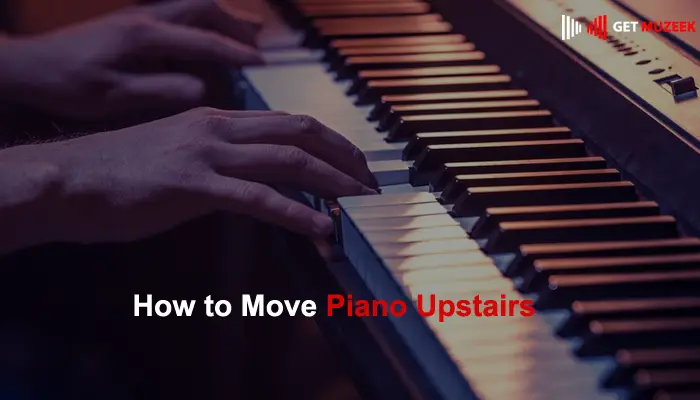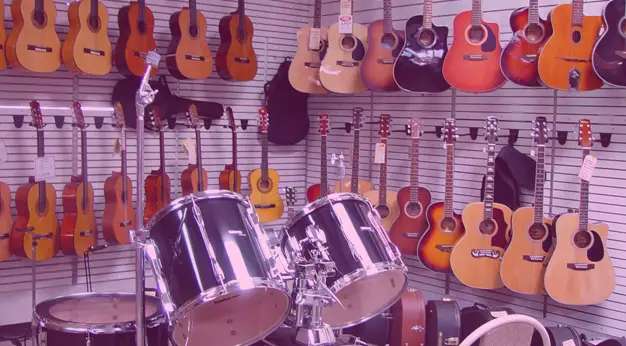
Moving a piano upstairs can be a daunting task, requiring careful planning and execution. The sheer weight and delicate nature of a piano make it a challenging item to transport.
However, with the right tools, techniques, and assistance, you can safely move your piano to an upper floor without causing damage to the instrument or your surroundings.
In this comprehensive guide, we will walk you through the process of moving a piano upstairs, providing you with helpful tips, precautions, and step-by-step instructions. So, let’s dive in and learn how to move a piano upstairs like a pro!
Understanding the Challenges
Moving a piano upstairs presents several unique challenges due to its size, weight, and fragile construction. It’s crucial to be aware of these challenges to ensure a smooth and safe moving process. Some of the main challenges include:
- Weight: Pianos can weigh several hundred pounds, requiring significant strength and coordination to lift and maneuver.
- Size: Pianos are large and bulky, making them difficult to fit through narrow spaces like doorways and staircases.
- Delicate components: Pianos consist of delicate internal components that can be easily damaged if not handled properly.
- Risk to surroundings: During the move, pianos pose a risk of causing damage to walls, floors, or other furniture if not handled with care.
Gathering the Necessary Tools and Equipment
Before attempting to move a piano upstairs, it’s essential to gather the necessary tools and equipment to ensure a successful move. Here are some items you’ll need:
- Moving straps: Sturdy straps designed specifically for moving heavy items, providing stability and support.
- Piano skid board: A specialized board with wheels that allows for easier transportation of the piano.
- Furniture blankets: Thick blankets to wrap around the piano for protection against scratches and impacts.
- Stair climbing dolly: A dolly equipped with a mechanism to handle stairs, providing ease of movement.
- Furniture sliders: Small discs or pads that can be placed under the piano’s legs to facilitate sliding.
- Tape measure: Used to measure doorways, staircases, and other relevant dimensions.
- Protective gloves: Heavy-duty gloves that provide grip and protect your hands during the moving process.
- Wrench and screwdriver: These tools may be required to disassemble and reassemble certain parts of the piano.
Measuring Doorways and Staircases
Before attempting to move a piano upstairs, it’s crucial to measure all relevant doorways and staircases to ensure the piano can fit through without causing damage or obstruction. Use a tape measure to accurately measure the width, height, and depth of the passages involved. Remember to account for any obstacles, such as railings or tight turns, that may require additional maneuvering during the move.
Ensuring Safety First
Moving a piano upstairs can be physically demanding and potentially hazardous. Prioritize safety throughout the entire process by following these guidelines:
- Use proper lifting techniques: Lift with your legs, not your back, to avoid strain or injury.
- Wear protective gear: Use gloves to maintain a firm grip and protect your hands from potential hazards.
- Take breaks: Moving a heavy piano can be tiring, so take regular breaks to avoid fatigue.
- Secure loose clothing and accessories: Tie back long hair, remove jewelry, and avoid loose clothing that may get caught during the move.
Preparing the Piano
Before you start moving the piano upstairs, it’s essential to properly prepare the instrument to minimize the risk of damage. Here’s what you need to do:
- Remove any loose items: Clear the piano of any loose items, such as music sheets or accessories, to prevent them from falling or causing damage during the move.
- Lock the keyboard lid: Close and lock the lid to secure the keys and prevent them from moving during transportation.
- Wrap the piano with blankets: Cover the entire piano with thick furniture blankets to provide protection against scratches and impacts.
Disassembling the Piano
In some cases, it may be necessary to disassemble certain parts of the piano to facilitate the move. Here’s a step-by-step process to disassemble a piano:
- Consult the piano manufacturer’s instructions: Different piano models have specific disassembly instructions. Refer to the manufacturer’s manual or contact them for guidance.
- Remove the piano legs: If possible, remove the piano legs using a wrench or screwdriver. Carefully store the legs in a secure place.
- Detach the piano lid: If the piano lid is detachable, remove it and store it separately. Make sure to wrap it in a protective blanket to prevent scratches.
- Secure loose components: If there are any removable or loose components inside the piano, secure them with tape or padding to prevent damage during transportation.
Enlisting Help
Moving a piano upstairs is a demanding task that requires at least four people. Enlist the help of friends, family members, or professional movers who have experience in moving pianos. Having an extra set of hands will make the process safer and more efficient. Coordinate with your team in advance, ensuring everyone understands their roles and responsibilities.
Using Proper Lifting Techniques
Proper lifting techniques are crucial when moving a heavy piano upstairs. Follow these guidelines to minimize the risk of injury:
- Maintain a stable base: Stand with your feet shoulder-width apart, providing a stable foundation for lifting and carrying.
- Bend at the knees: When lifting the piano, bend your knees while keeping your back straight. Avoid bending at the waist, as it can strain your lower back.
- Lift with your legs: Use the strength of your leg muscles to lift the piano, rather than relying solely on your back or arms.
- Keep a firm grip: Ensure you have a secure grip on the piano by using lifting straps or positioning your hands underneath the instrument.
- Communicate with your team: Establish clear communication with your team members to synchronize your movements and avoid accidents.
Protecting the Piano
During the move, it’s crucial to protect the piano from potential damage. Here are some measures you can take:
- Use furniture blankets: Wrap the entire piano with thick furniture blankets, ensuring all sides are covered. Secure the blankets with tape or straps to prevent them from slipping during transportation.
- Avoid dragging or sliding: Never drag or slide the piano, as it can damage the legs, pedals, or other delicate components. Always lift and carry the piano with care.
- Secure the lid and keyboard: Ensure the lid and keyboard are securely closed and locked to prevent any movement or damage during transport.
Navigating Staircases
Moving a piano upstairs requires careful navigation of staircases, which can be one of the most challenging aspects of the process. Here’s how to navigate stairs safely:
- Assess the staircase: Before attempting to move the piano upstairs, thoroughly inspect the staircase to identify any potential obstacles or hazards.
- Clear the pathway: Remove any loose items, such as rugs or objects, from the stairs to create a clear and safe path for moving the piano.
- Use a stair climbing dolly: If available, utilize a stair climbing dolly to transport the piano up the stairs. These specialized dollies are designed to handle staircases smoothly.
- Coordinate with your team: Communicate and synchronize your movements with your team members to ensure a smooth ascent. Assign specific roles, such as supporting the weight or stabilizing the piano.
Reassembling the Piano
Once the piano is safely transported to the upper floor, it’s time to reassemble the instrument. Follow these steps to reassemble the piano:
- Attach the piano legs: If the piano legs were removed, carefully reattach them using a wrench or screwdriver. Ensure they are securely fastened.
- Reattach the piano lid: If the piano lid was detached, align it with the hinges and carefully reattach it. Double-check that it closes properly.
- Inspect for damage: Take a moment to inspect the piano for any signs of damage that may have occurred during the move. If you notice any issues, consult a professional piano technician for assessment and repairs.
Finalizing the Move
After successfully moving the piano upstairs, there are a few final steps to ensure everything is in order:
- Tune the piano: Due to the vibrations and movements during the move, your piano may require tuning. Contact a professional piano tuner to bring your instrument back to its optimal condition.
- Inspect the surroundings: Check the surrounding area for any damage caused during the move. Repair or address any issues promptly to avoid further complications.
- Enjoy your piano: Now that your piano is safely upstairs, take a moment to appreciate your accomplishment. Enjoy playing beautiful music on your beloved instrument.
Frequently Asked Questions
Can I move a piano upstairs by myself?
Moving a piano upstairs is a challenging task that typically requires a team of at least four people. Due to the piano’s weight and size, attempting to move it alone can be dangerous and increase the risk of injury. It’s highly recommended to enlist the help of others or hire professional movers experienced in piano relocation.
How much does it cost to hire professionals to move a piano upstairs?
The cost of hiring professionals to move a piano upstairs can vary depending on factors such as the distance, difficulty of the move, and location. On average, you can expect to pay between $200 and $500 for professional piano moving services. It’s advisable to obtain quotes from multiple movers and ensure they have expertise in moving pianos safely.
Are there any alternative methods to move a piano upstairs?
While the standard method of moving a piano upstairs involves lifting and carrying the instrument, there are alternative methods available. For instance, a crane or hoist can be used to lift the piano through a window or balcony if the circumstances allow. However, these methods often require professional expertise and may not be suitable for every situation.
Can I use a regular dolly to move a piano upstairs?
Using a regular dolly to move a piano upstairs is not recommended. Pianos are heavy and delicate, requiring specialized equipment designed specifically for piano moving, such as a piano skid board or stair climbing dolly. These specialized tools provide better stability and maneuverability, reducing the risk of damage to the piano and your surroundings.
Should I tune my piano after moving it upstairs?
Yes, it’s advisable to have your piano tuned after moving it upstairs. The vibrations and movements during the relocation process can cause the strings and other components to shift, potentially affecting the instrument’s tuning. Contact a professional piano tuner to bring your piano back into proper tune and ensure optimal sound quality.
How long does it take to move a piano upstairs?
The duration of moving a piano upstairs can vary depending on factors such as the size of the piano, the layout of the stairs, and the experience of the movers. On average, it may take between 1 to 3 hours to complete the process. However, it’s important to prioritize safety and take the necessary time to ensure a successful move.
Conclusion
Moving a piano upstairs may seem like a daunting task, but with the right approach and precautions, it can be accomplished safely and successfully. By following the step-by-step guide in this article, you’ll be well-equipped to move your piano to an upper floor without causing damage to the instrument or your surroundings. Remember to prioritize safety, enlist the help of others, and use the appropriate tools and techniques. With patience and care, you’ll soon enjoy the beautiful melodies of your piano in its new location.
Related Posts:
- How to Play G on the Piano
- How to Play Wake Me up Avicii Guitar Chords
- How to Play Hallelujah Chords Guitar: A Comprehensive Guide
- How to Play Eight Days a Week Chords
- How to Play Taylor Swift “You Belong With Me” Chords



